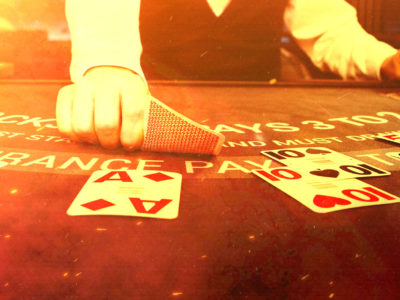This article was originally published in February 2022, and updated in April 2024.
They say you can’t win by folding, but try telling that to Doug Polk. Like Spraggy and Poker in the Ears, Polk was also a winner at the 2022 GPI Awards, scooping the Best Hand gong for his fantastic fold against Phil Hellmuth (straight versus higher straight).
As dull as it can seem at times, folding is the most common action in all of poker and the ability to get away from a hand in a big spot can be the difference between tournament life and elimination. That being said, the vast majority of poker players fold far too much both preflop and post-flop, maintaining their stacks but potentially missing opportunities to increase them.
To fold or not to fold? That is the question, so here’s a checklist of five things you should consider before throwing your cards in the muck or clicking the fold button.
STACK SIZES (AND BOUNTIES)
The ability to switch between chips and big blinds on PokerStars makes it much easier for poker players to assess situations from a stack size perspective. Still, who among us hasn’t folded a hand low down in our range from the cutoff, only to then realise the big blind has just three blinds left and a $20 bounty on their head?
Or alternatively, who among us hasn’t opened a weak hand from a late position without first checking the stack sizes of the players behind us, only to then get shoved on and have to fold?
When you’re dealt a hand, scan the stacks of your tablemates before you decide to fold or get involved. Check for any vulnerable stack sizes and bounties that you could potentially pounce on before you pass your hand. If there’s a raise in front of you and you’re about to hit fold on autopilot, stop and think: would a 3-bet here put the raiser in a tough spot in terms of their stack-to-pot ratio (SPR)?
Don’t get carried away, though. One of the biggest mistakes new players make is playing hands preflop that they shouldn’t, then finding themselves in tricky post-flop predicaments. For example, if there are plenty of potential shove stacks behind you, then you might want to consider tightening up your raise-first-in (RFI) ranges.
KO Poker: The 5 players to target (and the 5 players targeting you)
The mathematics of bounties | Complete guide to knockout poker
YOUR OPPONENTS
The more tables you play at once, the harder it becomes to keep track of what your opponents at the table are doing. If you can hone in, however, and you notice a player who’s raising every pot, you might want to start playing back at them with hands you’re on the verge of folding.
Alternatively, perhaps the players behind you are playing very tight. If so, you can start widening your RFI ranges and stealing the blinds and antes without much resistance using hands you’d usually fold.

Always assess the situation before folding
THE ODDS
Let’s say you’ve missed your flush draw on the turn and now face a second barrel. It’s probably time to fold, right?
Well, not always. Always consider the odds you’re getting to make your hand before throwing your hand away. If you have a flush draw with two overcards, do you think hitting a pair on the river might also give you the best hand? If so, you potentially have six more outs.
Also, consider how large your opponent’s turn bet is. What price are they giving you to stick around? If you can calculate that you’re getting a good deal (and calling the bet won’t significantly dent your stack) then it’s probably worth sticking around for the river.
THE MONEY BUBBLE
As you approach the money bubble in a tournament, your natural instinct might be to tighten up and make sure you have as many chips post-bubble as possible. After all, everyone wants to make the money.
So use that to your advantage. If you have a big stack when nearing the bubble, you can put pressure on the table by opening and 3-betting with hands you’d fold at other stages of the tournament.
Alternatively, if you’re a short stack, don’t automatically pre-click the fold box until you’ve assessed the situation. Let’s say you have 10 big blinds in the small blind and you tick the fold box assuming someone is going to raise, then they don’t. If you’d have known it was going to fold to you, could you have potentially shoved into another short stack and picked up the blinds and antes?
ICM
Similarly, as you approach the final stages of a tournament, you can apply some serious pressure to those hoping to make payjumps. When you cover opponents and could potentially eliminate them from the tournament, they’ll play far more cautiously against you, allowing you to open and 3-bet with hands you’d have simply folded an hour or two before.
In terms of ICM (the independent chip model–a mathematical model used to approximately calculate a player’s overall equity in a tournament), this has the greatest impact on players with middling stacks. A short stack won’t want to bust until the even shorter stack is eliminated. Likewise, if you’re chipleading, the player who’s second in chips is somewhat handcuffed when there are short stacks at the table.
All of this gives you more room to manoeuvre with hands you’d often fold.
Back to TopView Other Blogs




















